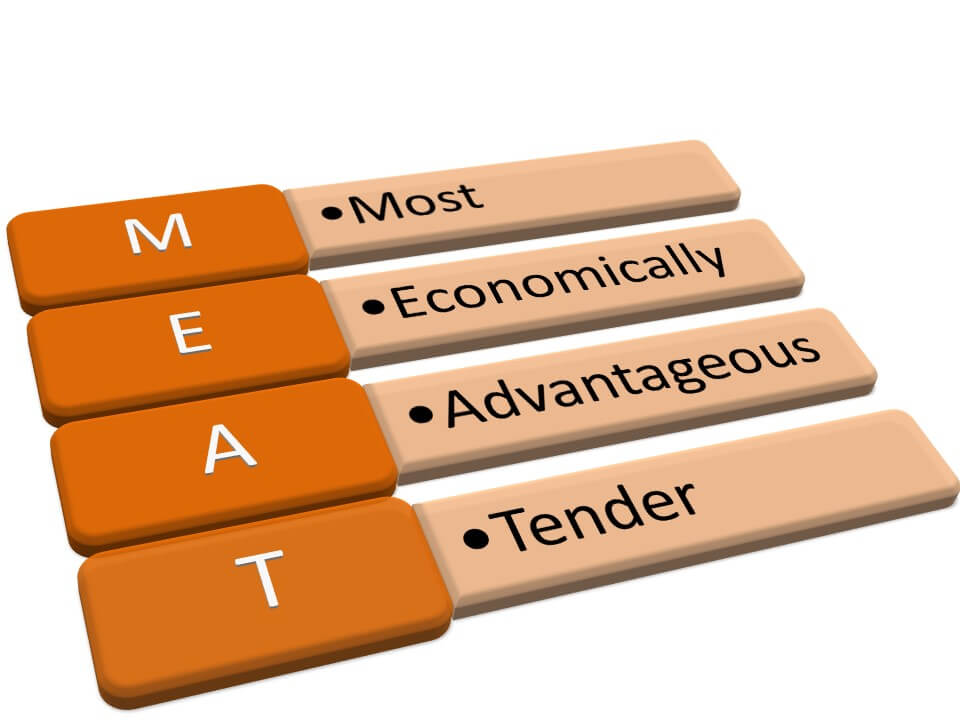Is the acronym MEAT – Most Economically Advantageous Tender – code for cheapest?

Many ITTs (Invitations to Tender) state that the tender will be awarded on this basis. They will then describe the formula with which tenders will be evaluated. The criteria for written material are generally fairly straightforward; points available plus a weighting. However the criteria for pricing is not necessarily so straightforward – quite often showing a formula that wouldn’t look out of place in nuclear physics.
Furthermore, understanding the criteria won’t necessarily help. The start point for calculating the score for pricing often starts with awarding the lowest bid 100%. Every other bid will be graded against that. You won’t, of course, have any idea of what this is going to be, so you won’t be able to gauge your own likely score. What’s more, the lowest bidder may not qualify as a consequence of other elements of their tender. What this means is that you will have no idea of the likely differential in terms of pricing score between you and other tenderers. The implication of this is that either price is likely to be more relevant than quality, or that quality is likely to be more relevant than price. You just won’t know.
All of this means that you have to be as competitive as possible. This means submitting your best price, and submitting the best quality response.
In terms of pricing, this is a matter of finding a balance between;
- How much you need to charge for the contract to be viable
- What price you need to go in at to win the business
If there is no overlap between the two you need to consider seriously whether you should be bidding for this business.
Providing there is an overlap the strategic decision is where to pitch your bid. Don’t pitch so low that you have no room for manoeuvre. On the other hand you need to be competitive enough to be seriously considered.
For more on pricing to win contracts contact us.